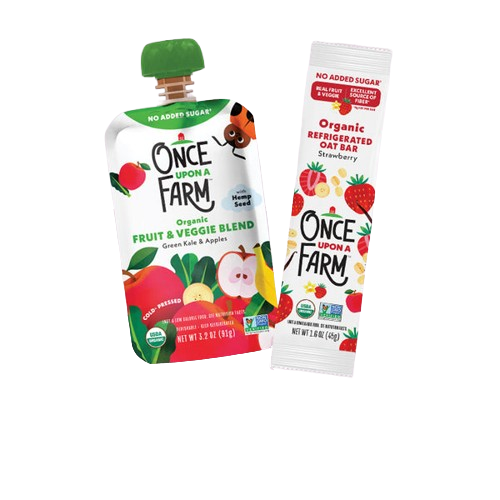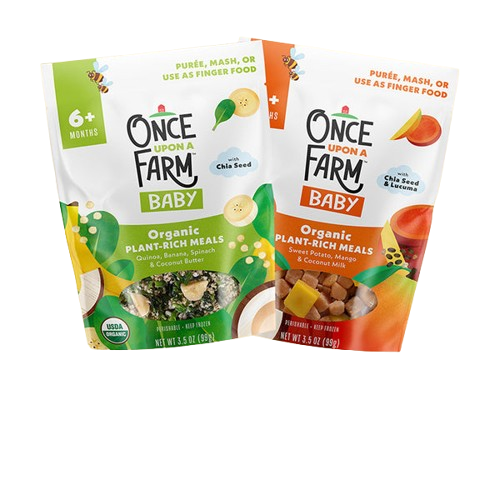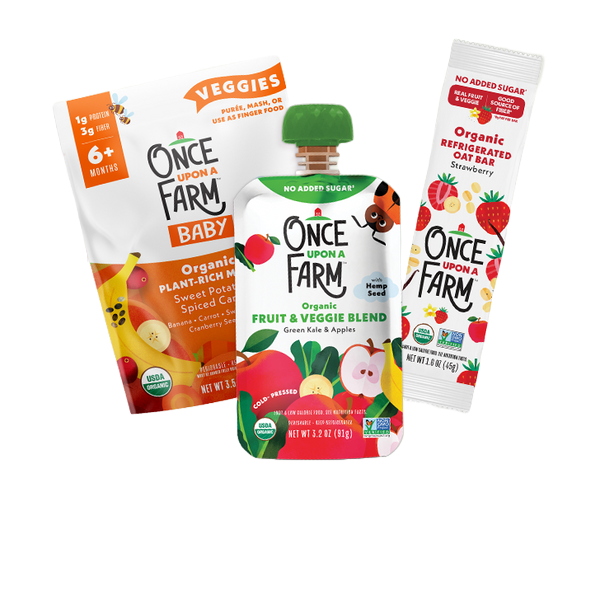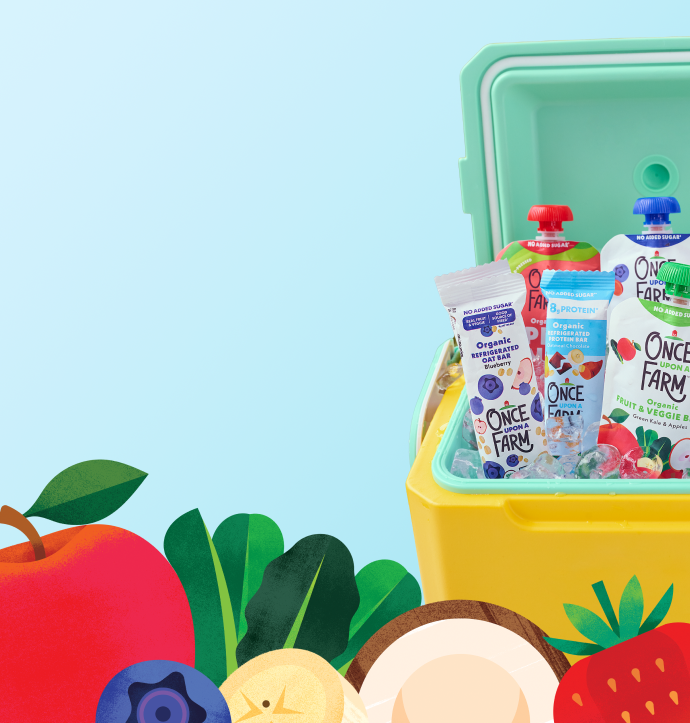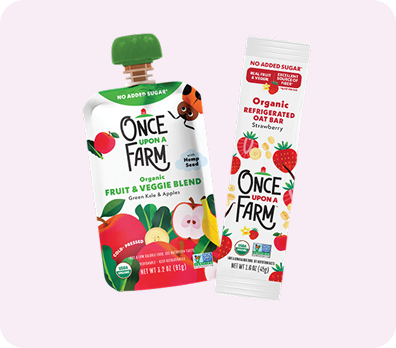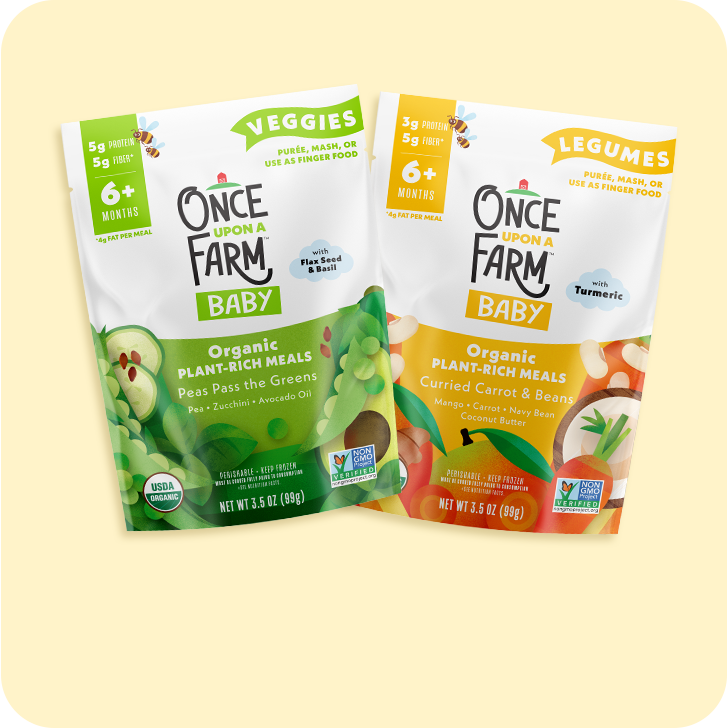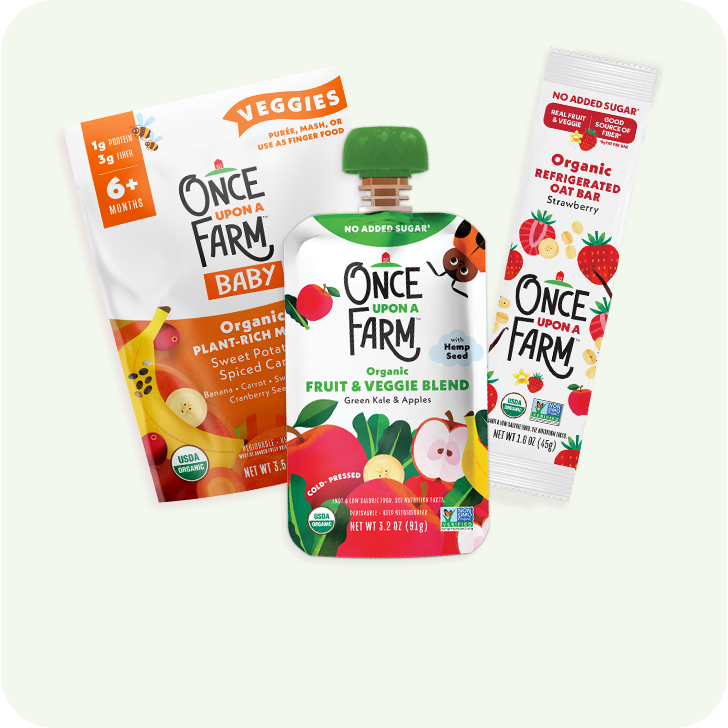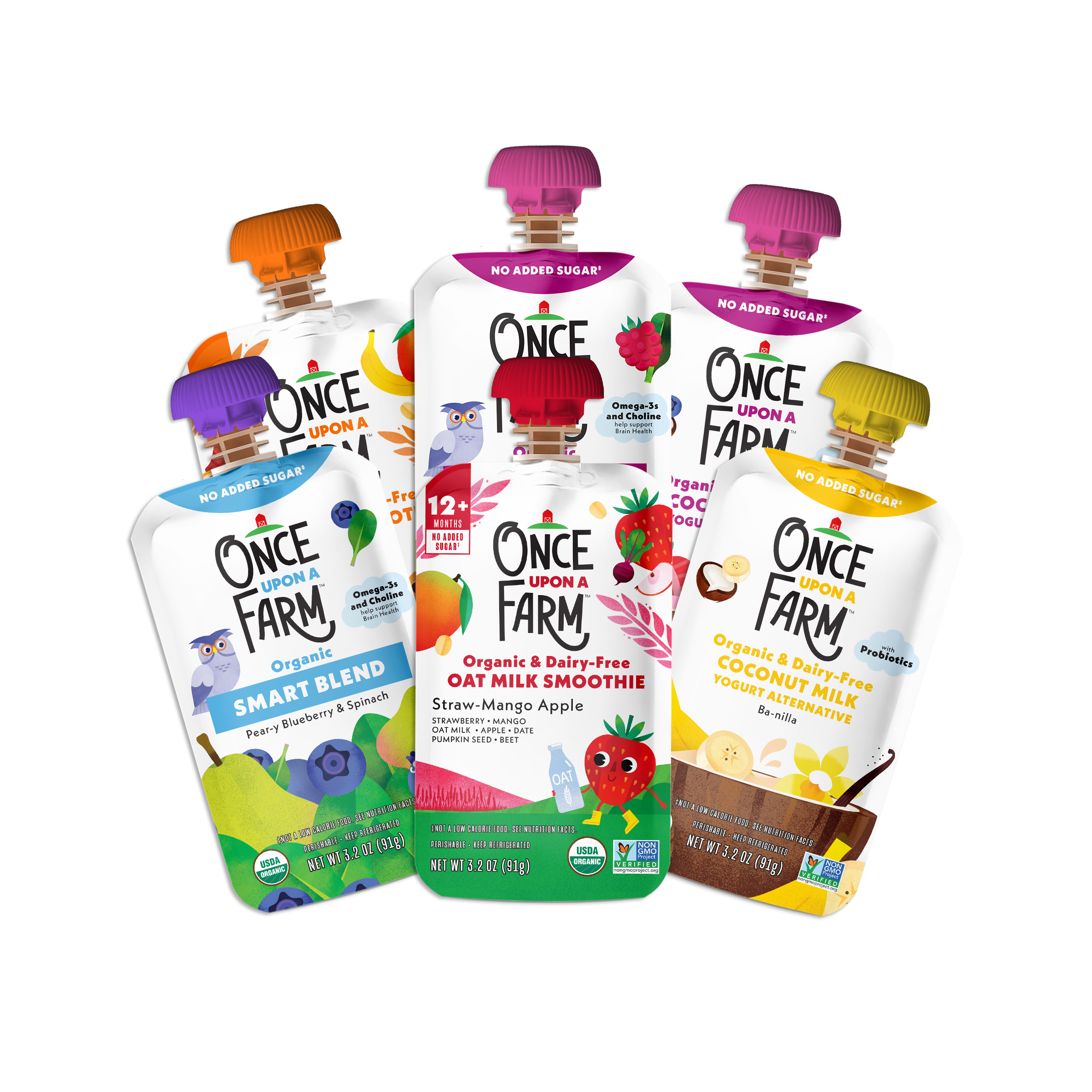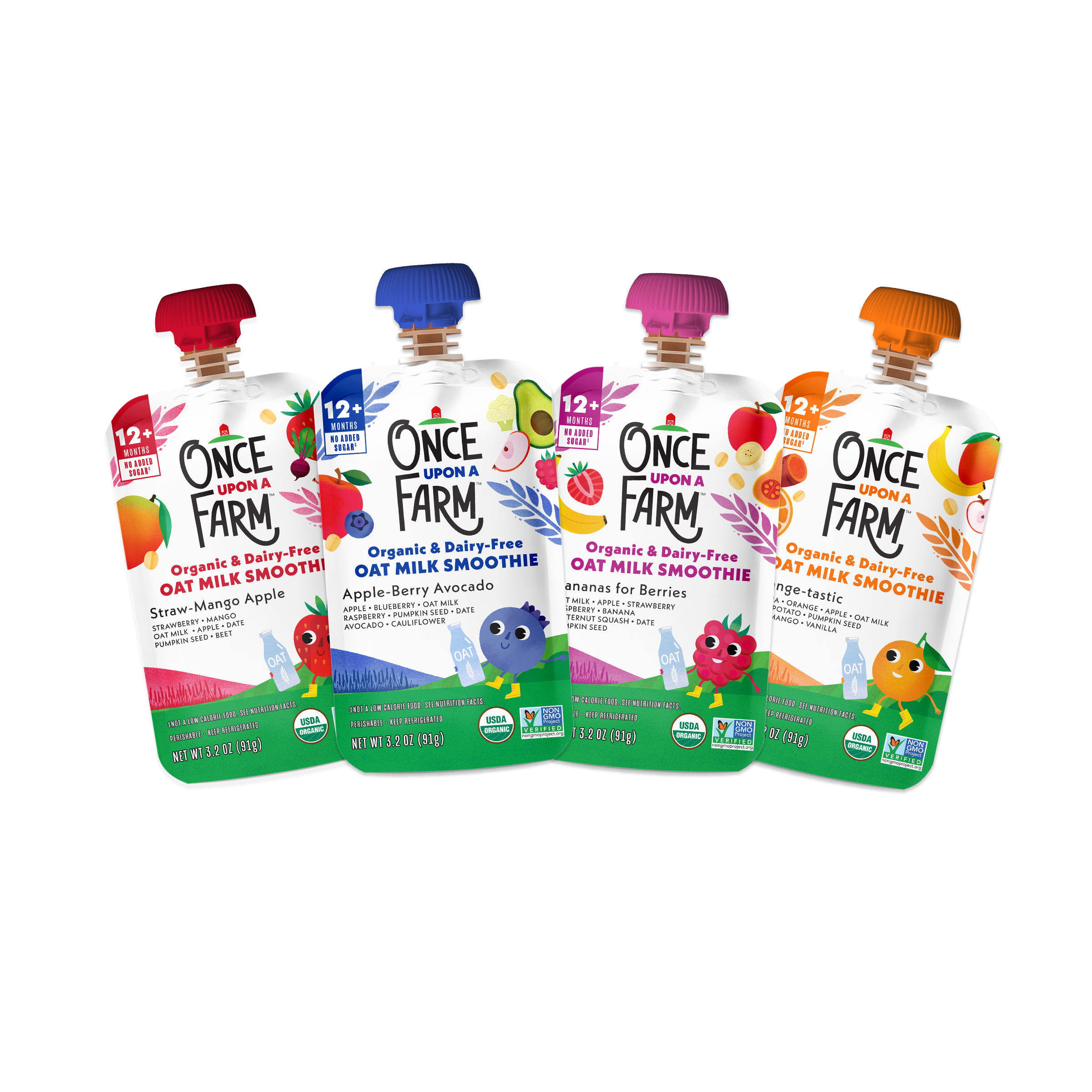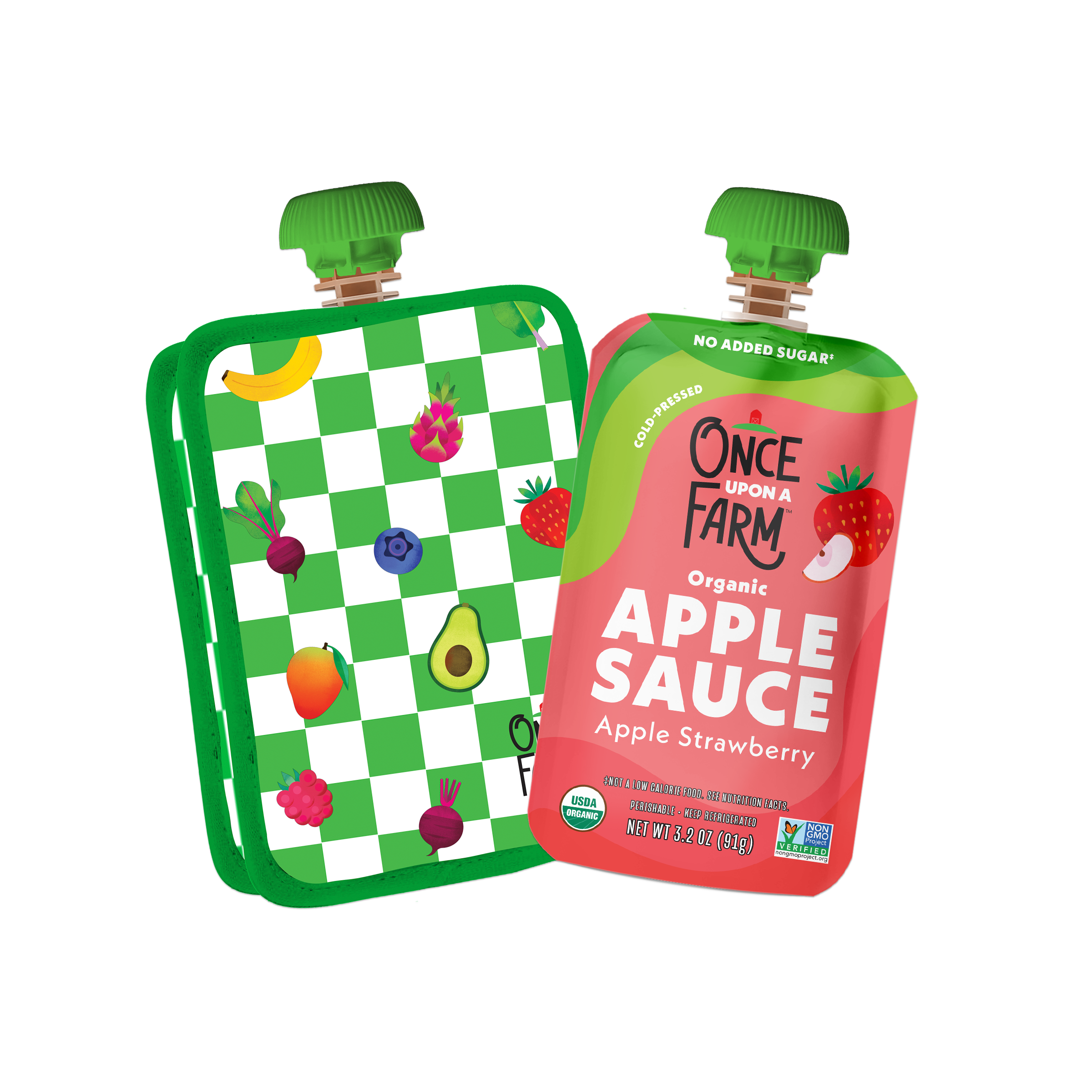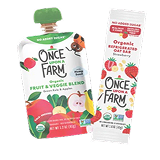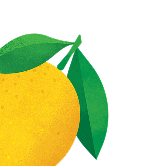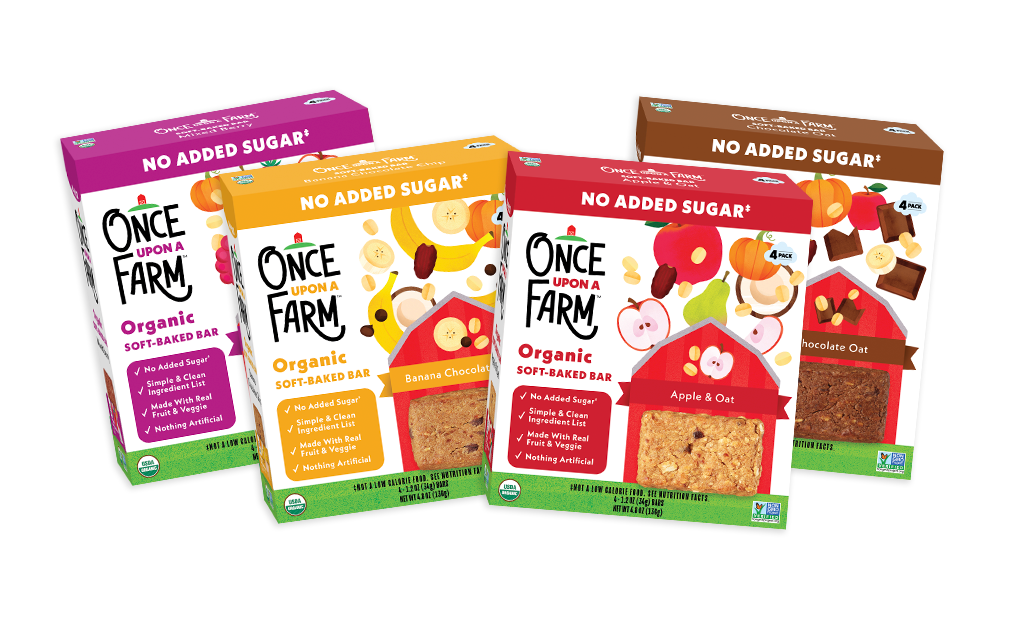Where to Start When Starting Solids
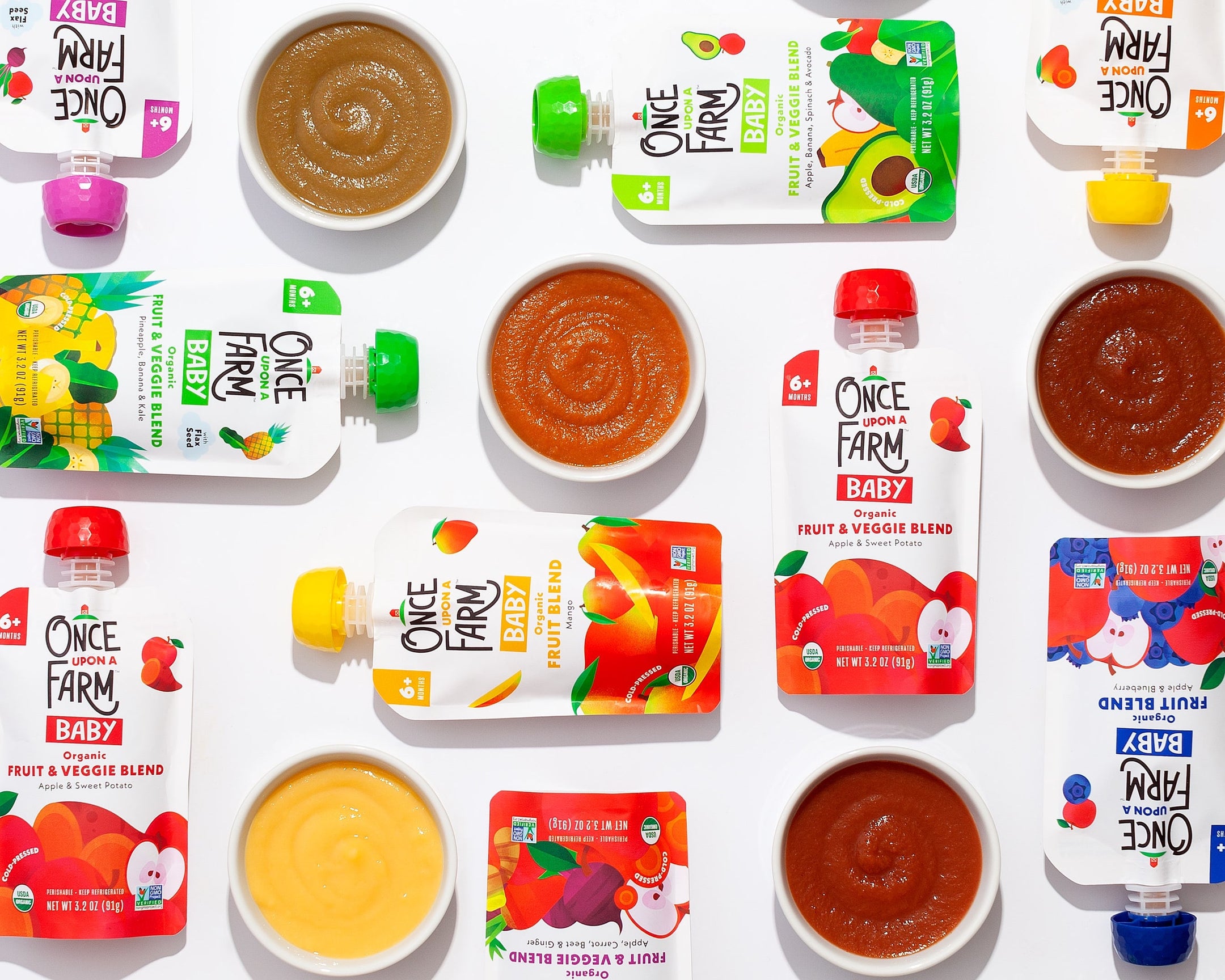
Introducing your little one to their first foods can be an exciting, yet nerve-racking adventure. How do I start? What do I feed my baby? Which first foods are best? Do I still breastfeed her? How often? How thick or thin does the food need to be? What nutrients does she need? What if she has an allergic reaction? A million and one questions about starting solids are probably buzzing through your brain right now. I get it.
As a first-time mom over 6 years ago, these same questions kept me up at night. Amid all the uncertainty circling through my head, however, I knew 2 things for sure: 1) I wanted to feed my baby the best food out there in order to give her the best start in life and 2) I didn’t want to make it myself (hence the reason we have Once Upon a Farm)! With these 2 goals in mind, I started navigating the route to starting solids.
5 Tips for Starting Solids
With lots of trial and error…we figured it out and I was able to set my little one up for a lifetime of healthy eating from the very first bite. For you moms and dads in this tricky territory for the first time, here’s what I’ve learned throughout my journey of motherhood, including my top 5 tips for starting solids!
1. Variety is Key When Starting Solids
The collective conversation around starting solids used to be that you need to start your baby off with one food at a time, preferably veggies, moving later to fruits. While the importance of feeding babies a variety of fresh foods holds true today, starting them on one food at a time and waiting a few days before introducing another, however, does not. You can feed them carrots on day one and mango on day two if you want!
The key to having a lover of fruits and veggies later on is to give your babe a variety of options including all types of fruits and veggies with lots of different flavors and textures early on. Although people may tell you that you MUST start with veggies, starting your baby on fruit does not mean they’re going to be adverse or despise veggies later on. Variety is key, so feel free to give them fruits and veggies either together or separately. There is room to play. In fact, research has shown vegetable acceptance to be improved when paired with fruits! (1) And don’t give up if you get a “NO WAY, closed mouth, I’m not eating that” reaction. It can take up to 10-15 times for a baby to become accustomed to eating a certain food, so keep on trying! (2)
As a first-time mom with Divinaka, I started her off with avocado at 6 months of age because that’s when she seemed ready. By “ready,” I mean she was sitting up straight on her own, had a few teeth, was grabbing at food to try and put it in her mouth and moved toward the food and readily opened her mouth when I presented it to her. I moved to sweet potato and butternut squash shortly after and introduced sweeter fruits a bit later. She is 100% a fruit lover.
With my second daughter, Skyla, I started her on mango and pears (at 5 months of age, as that’s when she showed signs of being ready) and introduced spinach, peas, carrots and combinations of fruits and veggies shortly after. Skyla loves everything. She says her favorite food is “broccoli” (although I later discovered she was actually saying “black gummy” in reference to their daily gummy vitamins, but she still eats broccoli, so it’s all good in my book!). With my third, Solkaiya, I give her all kinds of Once Upon a Farm blends. Now at age 9 months, she eats all of the Fruit & Veggie Blends. It’s yet to be determined what her favorites will be but I plan to continue exposing her to lots and lots of options!
The most important thing to remember when starting solids is VARIETY. Expose your little loves to lots of different foods and flavors to expand their palates and start a love of food early on.
2. Don’t Give Up
Lots of parents will give up after a few tries when starting solids and come to the conclusion that “my baby doesn’t like that” if their baby refuses to eat something. Remember, that’s not necessarily the case. It can take multiple attempts at feeding a new food (and trying at different times of the day) before your baby will like it. Keep trying and don’t give up! Just because they make a “sour” face doesn’t mean they don’t like the food. It’s new and something they’re getting used to, so keep introducing it. If after 10-15 times they still say no, you can probably confidently conclude they don’t like it… for now.
If they seem to scrunch their nose and close their mouth in response to that yummy green veggie you present to them, remember to make feeding fun. My littles always love when food becomes an airplane flying through the air to come in for a landing or when they themselves become a “shark” who has to eat all the little fishies on their plate. The possibilities are endless if you let your imagination soar a bit.
3. Develop a Routine
Have a routine around eating and START EARLY. Habits are easier to form early on so if you want your kids to love sitting down at the dinner table when they’re older, start now! Pull that highchair right up to the table, sit down with them and feed from a spoon (Once Upon a Farm pouches can be portioned into a bowl and fed with a spoon during the early months). When they’re ready to feed themselves, the pouch is the perfect way to let them experiment with and learn how to do that.
4. Bring on the Nut Butters!
Peanut butter at 5 months!? Yep! Long gone are the days of avoidance when starting solids. I give Solkaiya peanut butter and banana (who doesn’t love that combo?) regularly. She also loves almond butter mixed with Once Upon a Farm Apple & Sweet Potato blend (so do I – yum!).
The AAP recommends that infants as young as 4 months of age get exposed to allergens early on now to prevent allergies later in life. The statistics are astonishing. In the Learning Early About Peanut (LEAP) study, infants who showed only a mild allergy and infants that had an absence of an allergy were exposed to peanuts between 4-6 months of age and both groups showed decreased presence of allergies at 5 years old. (3)
For the study, there were two groups of babies and each group was split into two. Group 1 babies showed no indication of allergies using a skin test. Group 2 babies did show a mild indication of allergies according to the skin test (babies with severe allergies were excluded from the study). At 4-6 months of age, both groups were randomly split in half. Half of each group was exposed to peanut butter and half of each group had no exposure to peanuts.
In the group that showed an absence of allergies at 4-6 months and was EXPOSED to peanut butter, only 1.9% tested positive for allergies at age 5. The other half of this “no allergy” group that AVOIDED peanut butter showed a 13.7% prevalence of allergies at age 5. In the group that originally showed mild signs of allergies at 4-6 months and was EXPOSED to peanut butter, only 10.6% still had allergies at 5 years old. The half of this “positive allergy” group that AVOIDED peanuts showed a 35.3% prevalence at age 5. A huge difference! (4)
So, not only are you setting up your little one for a lifetime of healthy eating by giving them nut butters, you are also giving them excellent nutrition and helping them feel satisfied for longer (nut butters are a good source of protein and good fats) while helping to fend of nut allergies. (5)
5. Incorporate Different Textures
We’ve covered how important different flavors are, but different textures are equally as important when starting solids! (6) What your baby eats now will likely be what they prefer later on, so exposing them to textures (thin, medium, thick, semi-chunky, chunky) is a GOOD thing. Baby food should not be all the same. Save the bigger chunks, and more textured or chewy foods for when they are around 6+ months and always make sure to talk to your pediatrician to ensure they’re ready for more textures. Every baby is different.
Lastly, listen to your mama wisdom when feeding. It’s in there, but sometimes it can get lost with all the external information we are bombarded with. I am a firm believer that Mama always knows best, so stick to your gut and have fun!
As a recap, see below for a brief Q&A for starting solids!
-
How do I start?
- When your little one starts showing signs of being ready for solids (typically around 5-6 months), you can start with pureed or mashed fruits and veggies!
- What do I feed my baby?
- Variety is key here. Whether you start with fruits or veggies, make sure to mix it up so they become accustomed to a variety of foods.
-
Which first foods are best?
- I started my kiddos with organic avocado, sweet potato and butternut squash as they’re nutrient dense, easy to mash and yummy, but you can start with any fruit or veggie!
-
Do I still breastfeed? If so, how often?
- It’s up to you. I breastfed Divinaka and Skyla until they were about 18 months old. They naturally ate more solids as they gold older and I naturally started to breastfeed less.
-
How thick or thin does the food need to be?
- Start with thinner purees and gradually work up to more textured or “chunky” blends when ready. Once Upon a Farm meals are easily adaptable to however your baby is eating. Puree, mash, or serve as finger food to introduce a variety of textures and promote oral and motor development.
-
What nutrients do they need?
- Some of the most important nutrients for growing babies are calcium, fat, folate, iron, zinc, b-vitamins, protein and carbohydrates.
-
What if they have an allergic reaction?
- Always check with your pediatrician, but the AAP recommends that infants as young as 4 months of age get exposed to allergens early on now to prevent allergies later in life. I know that can be a scary introduction, so if you’re worried about it, you can bring nut butters to your next pediatrician appointment and introduce them there. If your little one has an allergic reaction to any of the foods you introduce, call your pediatrician right away.
***
The advice provided in this article is for informational purposes only and is not a substitute for medical diagnosis, advice or treatment for specific medical conditions. Always consult a pediatrician to understand the individual needs of your child.
Sources:
- Havermans RC and Jansen A. 2007. Increasing children’s liking of vegetables through flavour-flavour learning. Appetite. 48(2):259-62.
- Mennella JA, Nicklaus S, Jagolino AL, and Yourshaw LM. 2008. Variety is the spice of life: strategies for promoting fruit and vegetable acceptance during infancy. Physiol Behav. 94(1):29-38.
- “Randomized Trial of Peanut Consumption in Infants at Risk for Peanut Allergy | NEJM.” New England Journal of Medicine, Oxford University Press, nejm.org/doi/full/10.1056/NEJMoa1414850.
- Sicherer, Scott H. “New Guidelines Detail Use of ‘Infant-Safe’ Peanut to Prevent Allergy.” AAP Gateway, American Academy of Pediatrics, 16 May 2018, www.aappublications.org/news/2017/01/05/PeanutAllergy010517.
- “Going Nuts – For Nut and Seed Butters, That Is.” Today’s Dietitian, www.todaysdietitian.com/newarchives/090313p64.shtml.
- Forestell CA and Mennella JA. 2007. Early determinants of fruit and vegetable acceptance. Pediatrics 120(6):1247-1254.

